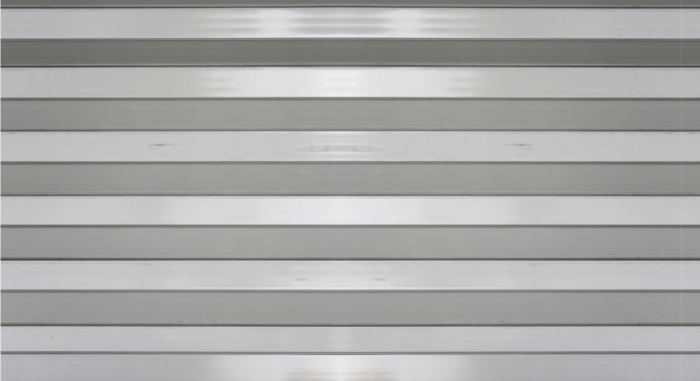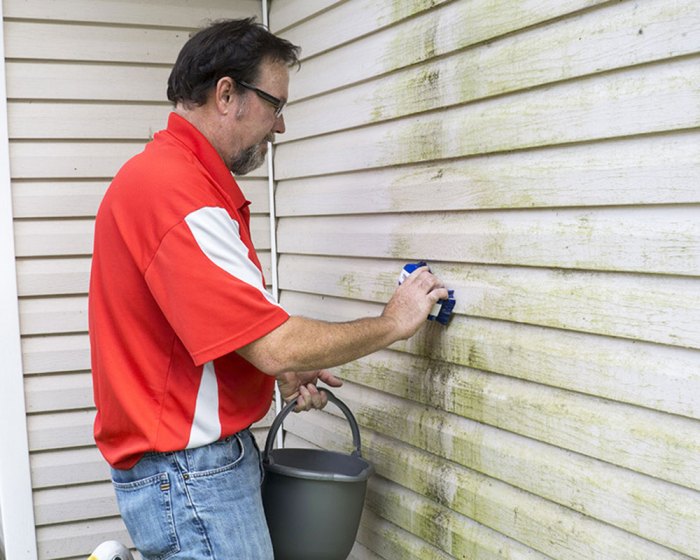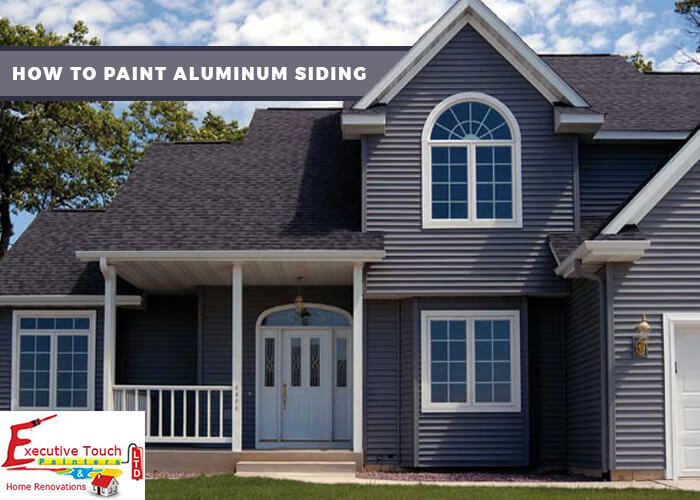Best Paint for Painting Aluminum Siding

Best paint for painting aluminum siding? It’s more than just picking a color; it’s about choosing the right type of paint to ensure a long-lasting, beautiful finish. Aluminum siding presents unique challenges – it’s a smooth, non-porous surface that requires a paint with excellent adhesion. This guide breaks down everything you need to know, from selecting the perfect paint to maintaining your freshly painted siding for years to come. We’ll cover different paint types, surface prep, application techniques, and choosing the ideal color and finish.
Getting the best results involves understanding the properties of various paints, like acrylic latex, acrylic alkyd, and epoxy. Each has its strengths and weaknesses regarding durability, flexibility, and resistance to the elements. Proper surface preparation is also crucial – cleaning, degreasing, and repairing any damage before painting is essential for optimal adhesion and a professional-looking finish. Finally, we’ll explore different application methods – brush, roller, and spray – and how to achieve a smooth, even coat each time.
Types of Paint Suitable for Aluminum Siding
Choosing the right paint for your aluminum siding is crucial for a long-lasting, attractive finish. The wrong paint can peel, chip, or fade quickly, leaving you with a costly and time-consuming repaint job. Understanding the properties of different paint types will help you make an informed decision.
Paint Types for Aluminum Siding
Selecting the appropriate paint depends on several factors, including your budget, desired finish, and the climate you live in. Let’s explore the most common types used for aluminum siding. Below is a table summarizing key characteristics of each.
| Paint Type | Durability | Finish Options | Best Use Cases |
|---|---|---|---|
| Acrylic Latex | Good; relatively durable, especially in moderate climates. Susceptible to cracking with extreme temperature fluctuations. | Flat, eggshell, satin, semi-gloss | General purpose, easy application, good for homeowners. Suitable for less demanding environments. |
| Acrylic Alkyd | Excellent; superior durability and weather resistance compared to latex. More resistant to chipping and fading. | Satin, semi-gloss, gloss | High-traffic areas, coastal regions, or areas with harsh weather conditions. Provides a more robust and longer-lasting finish. |
| Epoxy | Very High; exceptionally durable and resistant to chemicals, scratches, and extreme weather. | Gloss, semi-gloss | Industrial applications, areas requiring maximum protection. Often used for commercial buildings or high-performance applications. Can be more difficult to apply. |
Properties of Different Paint Types
Each paint type offers a unique set of properties that influence its suitability for aluminum siding.
Acrylic latex paints are water-based, making them easy to clean up and relatively low in odor. They offer good adhesion to aluminum, especially when a proper primer is used, but their flexibility is moderate. They are susceptible to fading and chipping over time, especially in harsh climates with significant temperature variations. Think of them as a good all-around choice for moderate conditions.
Acrylic alkyd paints, while also offering good adhesion, boast superior flexibility and durability compared to latex paints. Their oil-based nature provides better resistance to fading, chipping, and cracking, making them ideal for areas with harsh weather or high traffic. They tend to be more expensive than latex paints but provide a longer-lasting finish, justifying the added cost in the long run.
Epoxy paints offer the highest level of durability and protection. They are extremely resistant to chipping, fading, and chemical damage, making them suitable for demanding environments. However, they can be more challenging to apply and require specific surface preparation. They are generally reserved for situations where maximum protection is essential.
Comparison of Acrylic Latex and Acrylic Alkyd Paints
Acrylic latex and acrylic alkyd paints are the most commonly used options for aluminum siding. While both offer good adhesion, alkyd paints significantly outperform latex paints in terms of durability and weather resistance. Latex paints are easier to apply and clean up, but they require more frequent repainting. The choice depends on your priorities: ease of application versus longevity. If you prioritize a long-lasting, resilient finish, acrylic alkyd is the better option, even if it means slightly more effort during application.
Surface Preparation for Painting Aluminum Siding
Getting your aluminum siding ready for a fresh coat of paint is crucial for a long-lasting, beautiful finish. Proper preparation ensures the paint adheres well and prevents peeling or chipping down the road. This involves more than just a quick wipe-down; it’s a multi-step process that pays off in the end. Think of it as laying a strong foundation for your new paint job.
Proper surface cleaning is paramount for successful paint adhesion. A clean surface allows for optimal bonding between the paint and the aluminum, resulting in a durable and aesthetically pleasing finish. Dirt, grease, and other contaminants can prevent proper adhesion, leading to premature paint failure. Take the time to do this step correctly; it’s the key to a great paint job.
Cleaning and Degreasing Aluminum Siding
Before you even think about picking up a paintbrush, you need a clean surface. Here’s a step-by-step guide to get your aluminum siding ready:
- Rinse: Begin by rinsing the siding thoroughly with a garden hose to remove loose dirt, debris, and cobwebs. A pressure washer can be helpful for tougher grime, but use a low-pressure setting to avoid damaging the siding.
- Wash: Mix a solution of mild dish soap and water in a bucket. Use a soft-bristled brush or sponge to scrub the siding, paying close attention to areas with noticeable dirt or grime. Work in small sections, rinsing each area as you go.
- Degrease: After washing, rinse again with clean water. Then, apply a quality aluminum siding cleaner or degreaser according to the product instructions. This step removes any lingering grease, oil, or other contaminants that can interfere with paint adhesion. Allow it to dwell for the recommended time before rinsing thoroughly.
- Final Rinse: Give the siding one last thorough rinse with clean water to remove all traces of soap and degreaser. Allow the siding to dry completely before proceeding to the next step. This could take several hours, depending on weather conditions.
Repairing Damaged Areas, Best paint for painting aluminum siding
Minor scratches and dents are common on aluminum siding, especially in older homes. Addressing these imperfections before painting will improve the overall look and ensure a smooth, even finish. Ignoring them could lead to uneven paint coverage and a less professional appearance.
- Assessment: Carefully inspect the siding for scratches, dents, and other damage. Determine the severity of each imperfection to decide on the best repair method.
- Minor Scratches: For minor scratches, a light sanding with fine-grit sandpaper (220-grit or higher) is often sufficient. After sanding, clean the area thoroughly to remove any dust particles.
- Dents: Small dents can sometimes be gently pushed back into place using a rubber mallet and a piece of wood to protect the siding. For larger dents, you may need to use a specialized aluminum repair kit or contact a professional for assistance. These kits typically involve filling the dent with a filler designed for aluminum, sanding it smooth, and then priming the area before painting.
- Priming Repaired Areas: Before painting the entire surface, apply a high-quality primer specifically designed for aluminum to all repaired areas. This will help ensure proper adhesion of the paint and prevent the repaired areas from looking different after painting.
Application Methods and Techniques

Source: midlandspropainters.com
Choosing the right application method is crucial for achieving a professional-looking and long-lasting paint job on your aluminum siding. Different methods offer varying levels of efficiency, control, and finish quality. The best choice depends on factors like the size of the area, your experience level, and the desired finish.
The three primary methods for applying paint to aluminum siding are brushing, rolling, and spraying. Each method has its own set of advantages and disadvantages that should be considered before starting your project. Proper technique is essential regardless of the method you choose to ensure an even, smooth, and durable finish.
Brush Application
Brush application offers excellent control and precision, making it ideal for detailed work, such as around windows, doors, and trim. However, it can be a time-consuming method, especially for large areas. A high-quality brush with synthetic bristles is recommended for use with acrylic or latex paints, which are commonly used for aluminum siding.
- Advantages: Excellent control, precise application, suitable for intricate areas.
- Disadvantages: Time-consuming, can be labor-intensive, potentially less even coverage than spraying.
- Technique: Use smooth, overlapping strokes to avoid brush marks. Work in small sections, ensuring complete coverage before moving on. For a smoother finish, apply thin coats, allowing each coat to dry completely before applying the next.
Roller Application
Roller application provides a faster and more efficient way to cover large areas compared to brushing. It’s a good balance between speed and control, making it a popular choice for many homeowners. Using a roller with a nap length appropriate for the siding’s texture will ensure even coverage and prevent paint from accumulating in crevices.
- Advantages: Faster than brushing, good coverage for large areas, relatively easy to use.
- Disadvantages: Less control than brushing, may leave roller marks if not applied properly, not ideal for intricate areas.
- Technique: Load the roller with paint, ensuring it’s evenly coated. Apply paint in smooth, even strokes, overlapping each stroke slightly. Avoid overloading the roller, as this can lead to drips and runs. Use a paint tray to keep the roller consistently loaded.
Spray Application
Spray painting is the fastest method for covering large areas, offering a very even finish. However, it requires specialized equipment and a higher level of skill to avoid overspray and runs. Appropriate safety precautions, including respiratory protection, are essential when spray painting.
- Advantages: Fastest application method, very even coverage, ideal for large areas.
- Disadvantages: Requires specialized equipment, potential for overspray, requires more skill and preparation, higher initial cost.
- Technique: Maintain a consistent distance from the surface and a uniform spray pattern. Use overlapping strokes to ensure complete coverage. Apply thin, even coats, allowing each coat to dry completely before applying the next. Proper masking of surrounding areas is crucial to prevent overspray.
Choosing the Right Color and Finish

Source: impressiveinteriordesign.com
Picking the right color and finish for your aluminum siding is crucial for both aesthetics and longevity. The color you choose will significantly impact your home’s curb appeal, while the finish affects how well the paint protects the siding and how it looks over time. Consider your home’s architectural style, the surrounding landscape, and your personal preferences when making your decision.
Color selection and finish type are intrinsically linked to the overall lifespan and visual appeal of your paint job. A thoughtful approach ensures a harmonious blend of style and durability.
Color Palette, Finish, and House Style Combinations
The following table offers some suggestions for color palettes, finishes, and their suitability for different house styles. Remember that these are just starting points; feel free to adapt them to your unique taste and surroundings.
| Color Palette | Finish Type | Suitable House Styles | Visual Examples |
|---|---|---|---|
| Warm Neutrals (e.g., creamy beige, taupe, warm gray) | Satin | Colonial, Ranch, Craftsman | Imagine a creamy beige siding with subtle variations in tone, creating a warm and inviting feel. The satin finish provides a soft sheen without being overly glossy. |
| Cool Neutrals (e.g., light gray, silver, pale blue) | Matte | Modern, Contemporary, Farmhouse | Picture a sleek light gray siding with a matte finish. This creates a clean, modern look that complements contemporary architectural designs. The matte finish minimizes reflections, offering a subtle, sophisticated appearance. |
| Deep Jewel Tones (e.g., deep blue, emerald green, burgundy) | Semi-gloss | Victorian, Tudor, Cape Cod | Envision a rich, deep blue siding with a semi-gloss finish. This adds a touch of elegance and drama, particularly suitable for homes with intricate detailing. The semi-gloss provides a nice balance between shine and durability. |
| Classic Whites and Off-Whites | Gloss | Many styles, particularly those with bright trim | Think of a crisp, bright white siding with a glossy finish. This creates a clean, classic look that can work with various architectural styles, particularly when accented with contrasting trim colors. The glossy finish provides excellent protection and a vibrant appearance. |
Impact of Different Finishes
Different paint finishes offer varying degrees of sheen and durability. Gloss finishes are the most durable and easy to clean, but they can highlight imperfections. Matte finishes are excellent at hiding imperfections but are less durable and require more careful cleaning. Satin finishes offer a good compromise between durability and hiding imperfections. Semi-gloss offers a good balance of durability and a subtle sheen. The choice depends on your priorities and the condition of your siding. For example, a home in a coastal area with frequent exposure to harsh weather might benefit from a gloss finish for superior protection. A home in a less demanding climate might be suitable for a satin or even matte finish, depending on the desired aesthetic.
Color Combinations for Architectural Styles
Complementing your home’s architecture with the right color scheme enhances its overall appeal. For example, a Victorian home might look stunning with deep jewel tones, while a modern home might benefit from a neutral palette. A Craftsman style home could be beautifully accented with warm earth tones. Remember to consider the surrounding environment; a home in a wooded area might look better with earth tones or greens, while a home near the ocean might suit blues and whites. The key is to create a harmonious balance between the home’s architectural style, the paint color, and the natural surroundings.
Maintaining a Freshly Painted Aluminum Siding

Source: etpainting.com
Keeping your newly painted aluminum siding looking its best requires a bit of proactive care. Regular maintenance will protect your investment and extend the life of your paint job, preventing costly repairs down the line. This section Artikels simple yet effective strategies to ensure your siding stays vibrant and well-protected for years to come.
Proper maintenance is key to preserving the beauty and longevity of your freshly painted aluminum siding. Neglecting regular cleaning and addressing minor damage promptly can lead to more extensive and costly repairs later. By following these guidelines, you can significantly extend the lifespan of your paint job and maintain the curb appeal of your home.
Regular Cleaning Procedures for Aluminum Siding
Regular cleaning is the cornerstone of maintaining freshly painted aluminum siding. Dirt, grime, pollen, and other airborne debris can accumulate quickly, dulling the paint’s finish and potentially causing damage over time. Gentle cleaning helps prevent these issues.
Cleaning your aluminum siding should be done at least twice a year, ideally in spring and fall. For routine cleaning, a simple solution of mild dish soap and water is usually sufficient. Avoid harsh chemicals, abrasive cleaners, or high-pressure washers, as these can damage the paint. Here’s how to proceed:
- Mix a solution of mild dish soap and lukewarm water in a bucket.
- Use a soft-bristled brush or sponge to gently scrub the siding, working from top to bottom.
- Rinse thoroughly with a garden hose or pressure washer set to a low pressure setting. Ensure all soap residue is removed.
- Allow the siding to air dry completely before applying any additional treatments.
Addressing Minor Paint Damage
Even with careful maintenance, minor paint chips or scratches can occur. Addressing these promptly prevents them from worsening and leading to more extensive damage. Early intervention is crucial.
Regularly inspect your siding for any signs of damage, such as chips, scratches, or fading. Small imperfections can often be repaired with a touch-up paint that matches your original color. For larger areas or more significant damage, consulting a professional painter may be necessary.
- Identify the damaged area and carefully clean it before applying any repair.
- Use a high-quality touch-up paint that exactly matches the original color to ensure a seamless repair.
- Apply the paint in thin, even coats, allowing each coat to dry completely before applying the next.
- If the damage is extensive or beyond your capabilities, consult a professional painter for assistance.
Final Conclusion: Best Paint For Painting Aluminum Siding

Source: wepaintsiding.com
Painting aluminum siding successfully hinges on careful planning and execution. By selecting the right paint, meticulously preparing the surface, and applying the paint correctly, you can transform the look of your home while protecting your siding for years to come. Remember, regular cleaning and maintenance are key to preserving your beautiful, freshly painted aluminum siding. So grab your brushes (or sprayer!), and let’s get started!
Essential FAQs
Can I paint aluminum siding myself, or should I hire a professional?
While you can certainly DIY, hiring a professional ensures a higher quality finish, especially for large areas or complex designs. Consider your skills and the size of the job before deciding.
How long does aluminum siding paint typically last?
With proper preparation and high-quality paint, you can expect aluminum siding paint to last 5-10 years, or even longer depending on the climate and maintenance.
What’s the best time of year to paint aluminum siding?
Spring or fall are generally ideal. Avoid painting in extreme heat or cold, as this can affect drying time and paint adhesion.
How do I deal with peeling paint on my aluminum siding before repainting?
Carefully scrape off all loose paint, then prime the affected area before applying a new coat. Consider using a paint scraper and wire brush for stubborn areas.
What type of primer should I use on aluminum siding?
An exterior-grade primer specifically designed for metal surfaces is recommended to ensure proper adhesion of the topcoat.
Comments are closed.